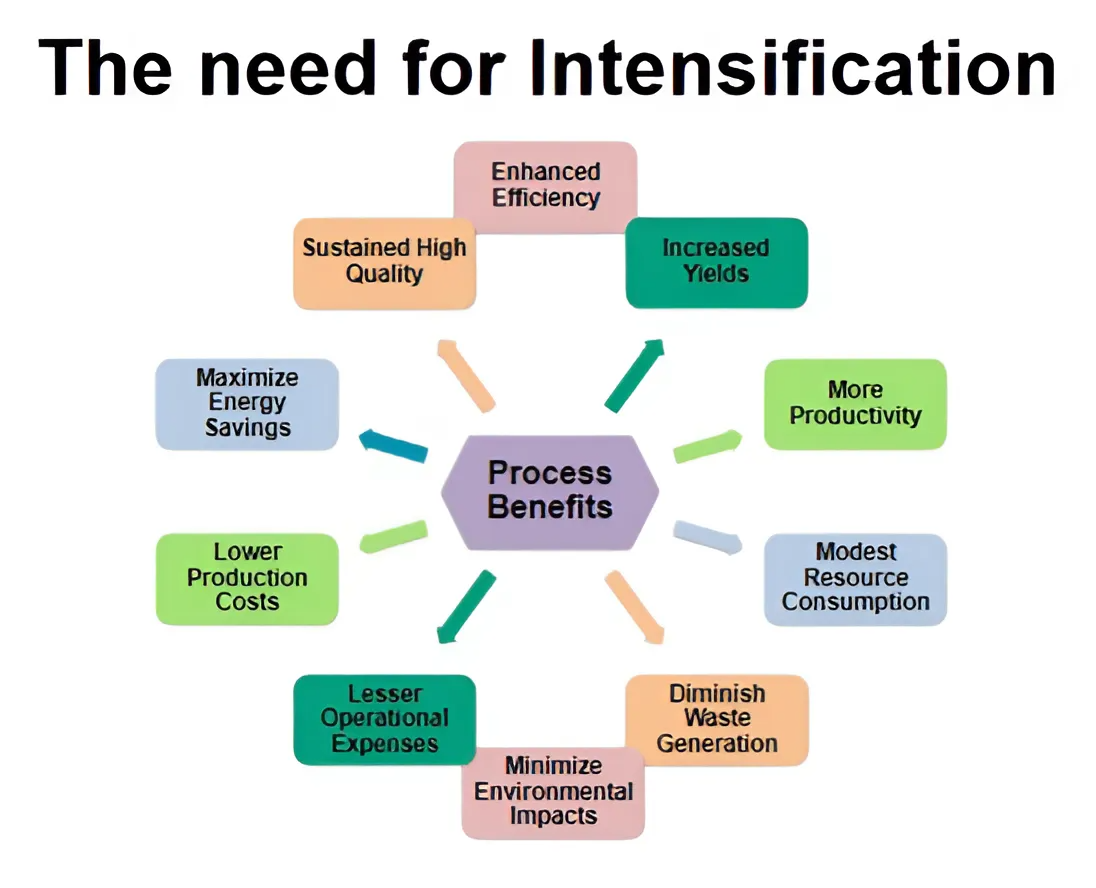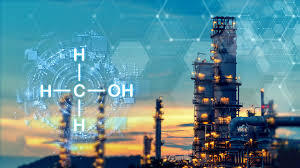Process Enhancement
Intensify | Integrate | Optimise – to unlock no-CAPEX wins today and transformational gains tomorrow
Angiras Rasayan couples 40 years of Manchester-born research with field-hardened digital twins to squeeze every rupee, kilogram of CO₂ and drop of steam out of your asset base. Together with our UK partner Advanced Process Integration Ltd (APIL) we blend Process Intensification (PI), Process Integration (PII) and real-time Optimisation (PO) into one continuous improvement engine – proven to deliver 2 – 8 % energy savings with zero capital and >20 % when retrofit funds are available.
The Angiras Rasayan I-I-O Playbook
| PROCESS | WHAT WE DO | WHY IT MATTERS |
|---|---|---|
| INTENSIFICATION | Compact, high-throughput equipment (e.g., rotating packed beds, reactive separations) that multiplies capacity per m³. | Smaller plots, lower steel, faster scale-ups. |
| INTEGRATION | Site-wide heat & mass pinch, cross-utility coupling, waste-heat routing. | 20 – 40% steam/CO₂ cuts typical for brownfield plants. |
| OPTIMISATION | Closed-loop digital twins and AI schedulers that retune every few minutes. | 5–12% extra OPEX savings over static design. |
Process-Systems Excellence
1 Heat-Exchanger Networks (HEN)
- Graphical-pinch & MILP engines pinpoint the theoretical minimum for hot & cold utilities, then deliver retrofit-friendly superstructures.
- Digital twins track fouling vs. design, flagging when 1% clean unlocks 10% in lost heat duty.
2 Utility-System Optimisation
- Steam-net™ solver weighs hundreds of boiler–turbine–vent scenarios in seconds; typical projects free 20-38 t / h live steam and €3.35 M / yr OPEX at large chemical parks in USA/Europe.
- Real-time advisor adjusts let-down valves, back-pressure turbines and CHP loads to shave another 2-4 % fuel daily.
3 Hydrogen-Ready Systems
- We harvest 30-120 °C waste heat from cracking, reforming or HEN hot-ends to pre-heat PEM or SOEC electrolysers, lifting round-trip efficiency by up to 9 %.
- Hydro-net™ sizing tool co-optimises O₂ valorisation, storage and safety zoning so you monetise every co-product molecule.
What makes us different – the ARLLP + APIL edge
| DIFFERENTIATOR | WHY IT MATTERS |
|---|---|
| IN-HOUSE OPTIMISATION SUITE – STEAM-NET, HEAT-NET, HYDRO-NET, DISTIL-NET, CRYO-NET | Rapidly builds digital twins of steam, heat, hydrogen and cryogenic networks for “what-if” economics in hours, not weeks. |
| ACADEMIA-TO-INDUSTRY PIPELINE LED BY PROF ROBIN SMITH (ROYAL ACADEMY OF ENGINEERING FELLOW) | Embeds the latest pinch & MILP algorithms that routinely expose 25 – 40% theoretical energy gaps. |
| YOUNGEST CHARTERED CHEMICAL-PROCESS ENGINEER IN INDIA ON STAFF | Brings agile design-thinking and IChemE/IET best practice to every study. |
| PROVEN LARGE-SCALE RESULTS |
• 7.6% operating-cost cut in Asian refinery with no CAPEX • 3.35 MM €/y steam savings at EU chemical park • 7.2 MM €/y profit uplift after crude-unit optimisation. |
| DIGITAL-TWIN + APC CAPABILITY | Real-time twins slash utility steam by 100 t day⁻¹ and pay back in < 6 months in refineries and chemical parks. |
Our Enhancement Framework
- Intensify – Smaller, smarter equipment
Rotating packed beds, high-shear mixers and modular micro-channels double throughput while shrinking footprint and CAPEX. Typical PI moves raise productivity 2× and drop plant size by 30 – 50 %. - Integrate – Total-site energy & utility harmony
Pinch-based heat-exchanger-network and steam-power optimisation routinely free 20 – 40 % utilities and can be staged for brown-field reality. - Optimise – Live, self-learning operations
Cloud-hosted digital twins feed advanced process control (APC) layers that re-tune set-points every few minutes, yielding an extra 8 – 12 % energy versus steady-state control.
Service Modules
| MODULE | DELIVERABLE | TYPICAL PAY-BACK |
|---|---|---|
| QUICK-SCAN (within a month) | Desk data review, pinch targets, utility gap chart, ₹-value of “easy wins”. | Immediate |
| DIGITAL TWIN BUILD | Steam, power & process twin with KPI dashboard. | 3 – 6 months |
| HEAT & UTILITY RETROFIT | MILP-optimised HEN or steam-driver revamp, ranked by NPV & outage window. | 1 – 3 years |
How a typical engagement flows
- Acquaintance & Potential Assessment – align targets, data and constraints.
- Model & Diagnose – digital twin, pinch & utility MILP to surface options.
- Co-Create Roadmap – CAPEX-free quick wins through to deep-dive retrofits.
- Implement & Verify – on-site tuning, KPI hand-shake.
- Sustain & Scale – quarterly optimisation cycles, new-site roll-out.
Ready to see the hidden megawatts and margin inside your plant?
Book a ProcEnhance Quick-Scan today and receive a data-backed business case as soon as possible – or request a live walkthrough of our steam-network twin in action.
Angiras Rasayan LLP – Engineering Tomorrow’s Profits, Today.


